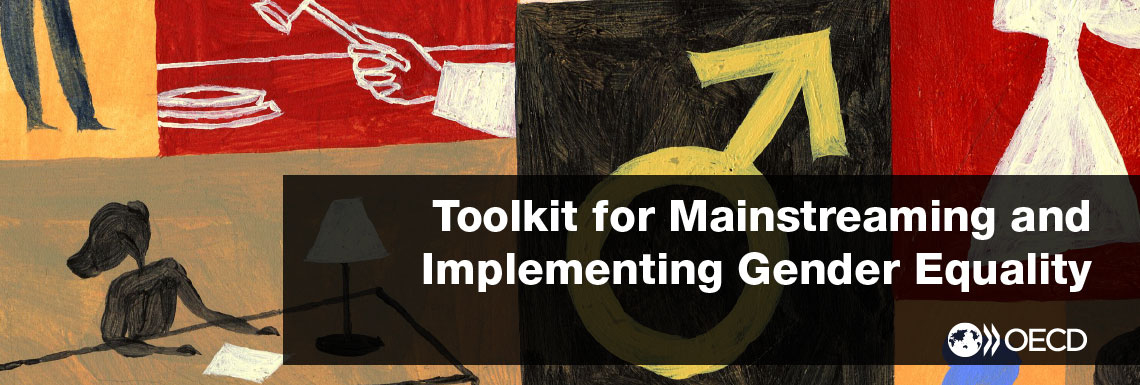Normative frameworks for gender analysis are adopted
SELF-ASSESSMENT QUESTION
- Is GIA mandatory for all government policies, programmes and budgets?
- Are GIA guidelines or other framework documents available and known by government institutions managers and senior officials?
- Are roles and responsibilities for the implementation of GIA and other gender analysis tools codified?
- Are management performance indicators referring to the implementation of GIA?
- Is there a specific mechanism/institutional responsibility for the quality control of GIAs?
WHY IS IT IMPORTANT?
Government policies and legislations are hardly gender-neutral. Most often, when they do not take into consideration the structural gender inequalities embedded in our society, they perpetuate and reinforce them. Gender impact assessments (GIAs) can help prevent such unintended consequences and allowing policy makers to foresee the impact of a new regulation, policy or programmes on the lives of women and men and the relations among them.
GIAs, also known as “gender audits” or gender-based analysis, systematically analyse the differential effects of policies, legislation regulations and institutional or individual practices on women and men. They improve the design and the planning of policies, prevent negative impact on gender equality and adapt the policy to make sure that any discriminatory effects are either removed or mitigated. To be most effective, GIAs must be fully integrated into policy development and implementation and supported at the highest level of government. The staff performing the GIAs need appropriate expertise and access to qualitative and quantitative data to back-up their analysis.
ACTIONS TO CONSIDER
- A requirement for the implementation of Gender Analysis and/or Gender Impact Assessments (GIA) with regard to wide-ranging policy making and delivery stages and processes, is in place as part of a policy document (law, strategy, action plan);
- A guiding framework (guidelines, approach, methodology, etc) for GIA implementation is in place and publicized across most diverse government actors;
- A formal indication of roles and responsibilities for GIA and the creation of an accountability system;
- Incorporate GIAs ex ante (before the proposed law or policy has been approved or gone into effect) and ex post (following implementation and during the impact evaluation, to assess whether the intended outcomes were achieved);
- Align gender analysis practices with the mainstream requirement for regulatory impact analysis of public governance (including procurement, consultation, service delivery, etc.);
- Ensure independent evaluation or audits are carried out concerning the application of gender analysis;
- Ensure all draft laws and regulations must contain a statement on gender impacts;
- Indicate institutional responsibility/a mechanism
PITFALLS TO AVOID
- Consider GIA as a “tick-the-box” exercise;
- Developing tools that are too complex to be used by a wide range of actors;
- GIAs are conducted based on formal requirements but lacking adequate framework, capacity and data; findings can be un-useful or misguiding;
- GIA and other gender analysis is only implemented in certain policy areas or processes.
COUNTRY EXAMPLES
Northern Ireland
The Northern Ireland Equality Commission defines the specific elements required for equality impact assessment. Particular attention is given to the consideration of measures to mitigate any adverse impact and to policies that might better achieve the promotion of equal opportunities. The consideration of mitigation and alternatives is identified as a crucial element of the process: authorities must develop options that reflect the different ways of delivering a policy outcome.
Austria
Since 1 January 2013, all new or amended laws and regulations as well as major investment or procurement contracts on federal level must include a mandatory ex-ante impact assessment on gender equality along with other assessments of potential socioeconomic and environmental impacts. Quantitative and qualitative thresholds ensure the proportionality of these efforts in relation to the respective law or regulation. The Ministry of Finance and the Federal Chancellery therefore provide content related and technical assistance. The impact assessments are disclosed for consultation and parliamentary discussions. Ex-post evaluations of the impacts are to be performed by Ministries within 5 years and reported to Parliament in the Annual Report on Impact Assessment submitted in May.
Sweden
In Sweden, binding regulations stipulate that GIAs must be conducted on policy proposals potentially affecting gender equality; bills require a separate section assessing whether proposals and expected outcomes contribute to the achievement of gender equality goals or potentially hinder fulfilment of the goals. Trainings and workshops are provided by experts at the Division for Gender Equality to support GIA related work in other departments and line ministries. The Division for Gender Equality also provides general training sessions on gender equality, gender mainstreaming and gender budgeting for all ministries within the Government Offices of Sweden. Line ministries can also take in external consultants or experts for support and trainings related to specific gender equality challenges (e.g., how to work with sex disaggregated data).
Spain
Spain’s Gender Equality Law of 2007 institutionalized gender mainstreaming across all public bodies, requiring public administrations to mainstream gender in the adoption and implementation of their legislative provisions and in the formulation and budgeting of all policies. This includes conducting “ex ante” gender impact assessments reports of legislative and regulatory proposals, which analyze and assess the results of their adoption from the perspective of elimination of inequalities and contribution to achieve equal opportunities and treatment between women and men, based on indicators on the current situation, results foreseen and their impact. This is considered particularly important for legislation not typically considered as gender-related, such as traffic.

